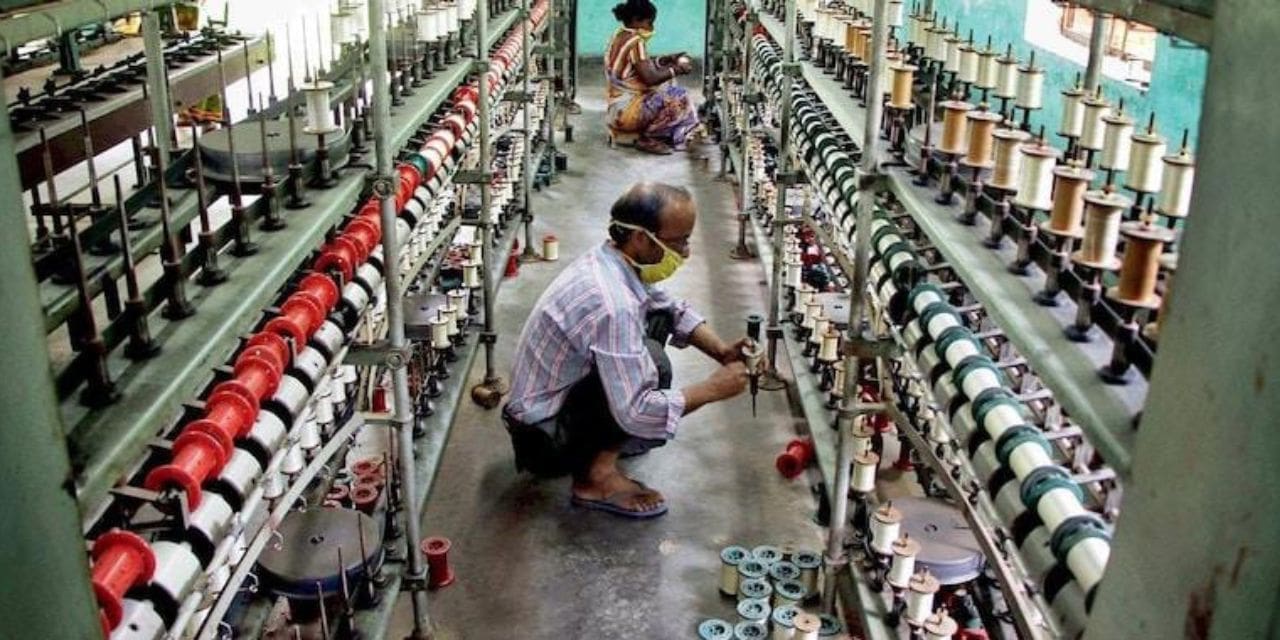Covid 19 / Corona Virus made our life fearful, but there is always a spark of light in the dark environment. India being an opportunist country and Jugad based economy, Indian has flourished in the difficult situation, and we are 2nd highest supplier of PPE kits in the world during this difficult period. In a short span of time, Indian has transferred operation from conventional garment / fabric units to PPE kits units. India has always proved to be in the front when it calls for low cost innovations, whereby an appreciation needs to be recorded for those SMEs especially ITAMMA members who have developed the mask making and automatic sanitizer disposal machines and disinfection chambers during the crucial and challenging Lockdown period.
Thus during COVID-19 situation it is also noticed that the demand for man-made fibre (MMF) textiles all over the world is increasing as a substitute for cotton amid changes in global fashion trends. Currently MMF dominates global textile fibre consumption with 72: 28 ratio i.e., MMF 72% and 28% is Natural fibre. The share of MMF has been steadily increasing due to the inherent limitations of growth of cotton and other natural fibres.
Global end-use demand for textile fibres is forecast to expand by an average of 2.80% per annum between 2015 and 2025, from 90.10 mn tons to 119.20 mn tons and global end-use demand for man-made fibres is expected to increase by 3.7% in 2025.
Also it is very important to note that in 2020, Artificial Textile Machinery were the world’s 916th most traded product, with a total trade of $887M. Whereby the top exporters of Artificial Textile Machinery were Germany ($362M), China ($239M), Japan ($91.1M), Italy ($86M), and United States ($34.4M). While top importers were China ($303M), Turkey ($123M), Japan ($72.8M), Vietnam ($43.8M), and Russia ($42.4M).
A ~$2.5 bn textile machine industry which is growing at 5% currently reflects on the growing strength of this sub-segment in the textiles value chain in India.
Looking at the Global scenario, Indian Govt. is also promoting man-made fibres and thus it is an alarm as well as opportunity to Textile Machinery Manufacturers for the development of machines and components especially for the processing of these fibres and also to the User Industry to decide the appropriate Machine Maintenance Management in order to have a smooth functioning of these MMF. Specifically those SME Enterprises working under Cluster activity in the decentralized sectors needs to revamp/restructure their Maintenance Management in a very systematic way in order to acquire the high performance functioning of these fibres.
“3D printing technology” will be playing a very vital role in the changing trends of Man-Made Textiles, not only in the stream of Fashion designing but also in the Safety Textiles and its machineries. This Technology offers enormous opportunities in production, design and performance.
The benefits of additive manufacturing on supply chains takes many forms. It reduces material waste, simplifies production processes, and the on-demand production offered by additive manufacturing improves supply chain flexibility because the finished product can be manufactured in proximity to the end-user.
Customers can acquire products, spare parts, and goods as needed, and businesses can produce parts as needed or forecast. Since a single 3D printer can produce a complete part without the need for tooling, it reduces dependence on fixtures and lowers production time.
The application of additive manufacturing, well known as 3D printing, in textile industry is not more totally new. It is giving significant increase of the product variety, production stages reduction, widens the application areas of textiles, customization of design and properties of products according to the type of applications requirement.
The advancing technical possibilities in 3D printing and 3D scanning make developments possible that will revolutionize production and trade in the fashion and textile industry. Clothing and shoes will soon be coming out of the 3D printer in an individualized way, new possibilities will open up for functional textiles, and 4D printing will take the 3D process to a new level with fascinating applications.
Not only 3D printing, 3D technology itself is changing the entire value chain in the apparel industry from design and prototyping to the finished product and its delivery.
Up to now, the designer has designed a product with two-dimensional materials and then created one or more cost-intensive prototypes and sample collections before the product could go into mass production. These cost drivers can now be replaced by a virtual 3D simulation. The software is now mature enough to test cuts on virtual size avatars as well as colors and patterns. The folds and movement of the avatars are also realistically simulated.
The 3D simulation makes the creation of the collection faster, more accurate and more cost-effective. If the prototype production is shortened, idle times and waiting times are eliminated and variants are possible at any time. This gives the company more flexibility and enables it to react much faster to new trends.
In the production of technical textiles, the main focus is on functional properties. For textile companies, 3D printing processes open up possibilities that cannot be realized with conventional processes. Elements such as plug-in connections can be applied directly to textile surfaces using 3D printing. In this way, textiles are created that integrate functionalities right from the start.
However, the use of 3D printers in the production of textiles is extremely complex, as plastic filaments are not used as usual.
Possible applications include tailor-made components made of narrow textiles and plastics for technical applications, the application of 3D structural elements for textile sun and noise protection, sportswear and the application of adapted mould reinforcements for protective and functional clothing.
By using 3D printing in production, the textile industry can not only functionally optimize its products right from the start, but production steps such as cutting, sewing or gluing functional components to a textile can even be saved in this way.
For 4D biometric printing, the researchers use a special hydrogel that contains cellulose fibres and transforms into an appropriate form upon contact with liquid. Areas in which the hydrogel could be used range from biomedicine and robotics to textile production and electronics.
The digitalization of the textile industry and further development of 3D/4D technology is leading to a strong change in the industry. In the near future, tailor-made products will become realistic for consumers, production will be replaced by flexible production facilities at the point of sale and innovative applications for functional and smart textiles will be developed. The environment also benefits from the elimination of transport routes and textile waste generated during production.
There are more than 3,000 companies involved in the manufacturing of textile machineries, accessories, and trading of equipment in India. The industry not only caters to rising domestic demand but also has the potential to establish India as an export hub for textile machinery with spinning machines representing the largest export opportunity.
With the help of Make in India drive, followed by ATMA Nirbhar Bharat and well supported by Vocal for Local, India is on the path of becoming the hub for hi-tech manufacturing. Whereby global giants have either set up or are in process of setting up manufacturing plants in India, thus many textile machine companies in the country are joining hands with their western counterparts to produce technologically advanced machines.
And accordingly we at ITAMMA, focused all our activities to improve the technological capability of our member companies through various Technology Development Programmes like 5S, Lean, Design Clinics, Energy Audits, Yellow belt trainings etc. under Cluster Development initiatives, in order to help them to have a sustainable growth in today’s smart manufacturing competitive global market.
This hard time have made us tough, and realize the importance of safety products and measures, for survival as well as a hope of sustainable business reminding us about the importance of silver lining at horizon. ITAMMA have always stood with the members in the changing trends and shall continue the same in this challenging situation also through its activities to improve the technological capability of our member companies.
AURTHOR:

Mr. N. D. Mhatre, Director General (Tech)
INDIAN TEXTILE ACCESSORIES & MACHINERY MANUFACTURERS’ ASSOCIATION (I T A M M A)

